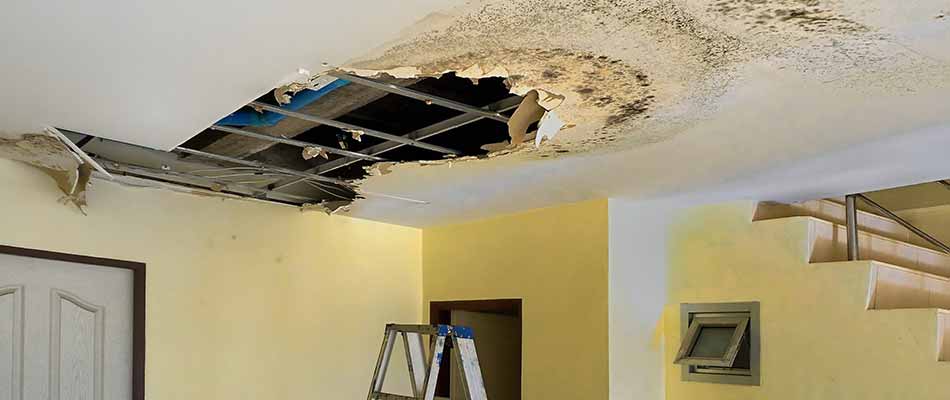Roof replacement is a significant investment that homeowners undertake to ensure the structural integrity and protection of their houses. However, it is not uncommon for homeowners to discover ceiling damage after roof replacement. This unexpected problem can be frustrating and worrisome, but understanding the potential causes, prevention methods, and effective solutions can help address the issue promptly. In this article, we will explore the reasons behind ceiling damage post-roof replacement and provide valuable insights to help homeowners tackle this issue effectively.

Understanding the Causes of Ceiling Damage After Roof Replacement
While a new roof is expected to provide improved protection, several factors can contribute to ceiling damage following the replacement process.
Improper Installation Techniques
One of the leading causes of damage after roof replacement is improper installation techniques. If the roofing contractors fail to install the new roof correctly, it can lead to gaps, leaks, or inadequate insulation. Water can seep into these spaces, damaging the roof structure and eventually causing water stains and ceiling damage.
Lack of Ventilation
Inadequate attic ventilation can exacerbate the risk of damage after a roof replacement. Poor ventilation allows excess heat and moisture to accumulate in the attic, leading to the growth of mold and mildew. Over time, the moisture can weaken the ceiling material, resulting in sagging or cracks.
Undetected Pre-existing Issues
Before a roof replacement, it is crucial to conduct a thorough inspection of the attic and ceiling to identify any pre-existing issues. Undetected problems like water damage, rot, or pest infestations can worsen over time and become evident after the new roof installation.
Preventing Ceiling Damage During Roof Replacement
Taking proactive measures during the roof replacement process can significantly reduce the risk of ceiling damage.
Choose Reputable Roofing Contractors
Selecting experienced and reputable roofing contractors is paramount to a successful roof replacement. Research and gather recommendations from trusted sources to ensure you hire professionals with a track record of delivering quality workmanship.
Conduct a Comprehensive Inspection
Before proceeding with the roof replacement, perform a detailed inspection of the attic and ceiling. Address any existing issues, such as leaks or insulation problems, to prevent them from worsening after the installation.
Ensure Proper Ventilation
Discuss proper attic ventilation with the roofing contractors. Adequate ventilation helps regulate temperature and humidity levels, reducing the chances of moisture-related ceiling damage.
Effective Solutions
If you discover ceiling damage after a roof replacement, prompt action is necessary to prevent further deterioration.
Address the Underlying Issue
Identify the root cause of the ceiling damage and address it immediately. This may involve fixing leaks, improving ventilation, or replacing damaged insulation.
Repair or Replace Damaged Ceiling
Depending on the extent of the damage, you may need to repair or replace the affected ceiling areas. Consult with a professional contractor to determine the best course of action.
Seek Warranty Coverage
If the damage is a result of poor workmanship or faulty roofing materials, check your roof replacement warranty. You may be eligible for coverage and have the repairs done at minimal or no cost.
Conclusion
Ceiling damage after roof replacement can be a distressing experience for homeowners. However, by understanding the potential causes and taking preventive measures, you can reduce the risk of encountering this issue. If ceiling damage does occur, swift action and professional assistance are essential to address the problem effectively. Remember, a well-executed roof replacement, coupled with vigilant maintenance, will help ensure your home remains protected and structurally sound for years to come.



Leave a Reply